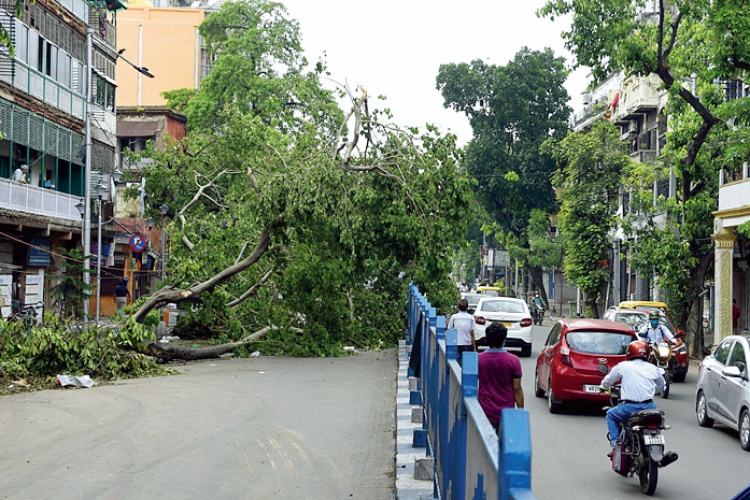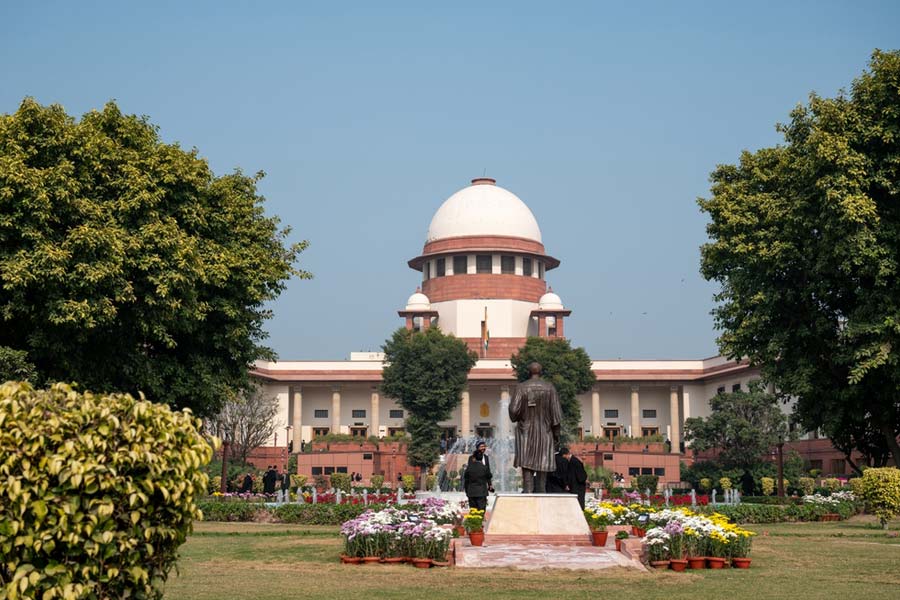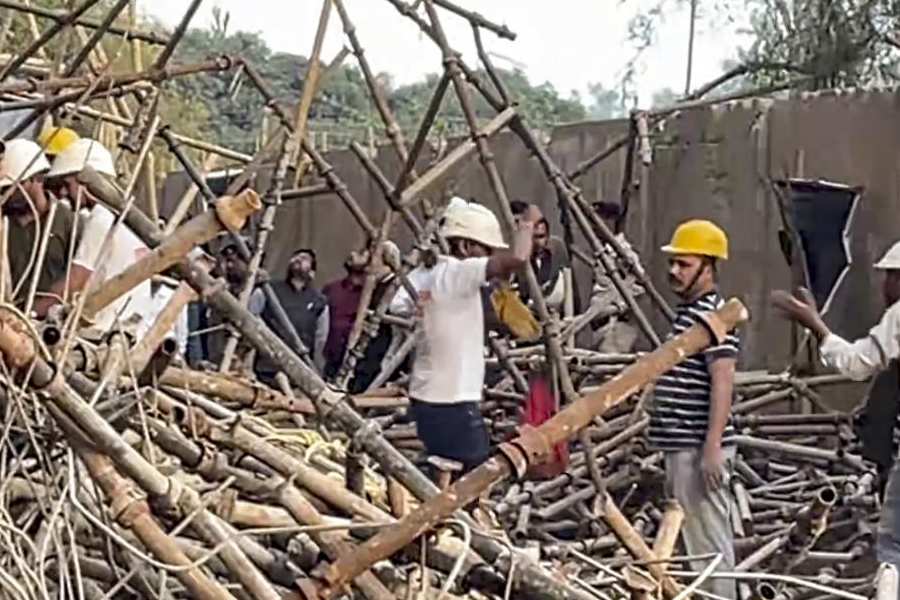Sir — According to the Calcutta Municipal Corporation, Cyclone Amphan has felled more than 6,000 trees in the city (“Storm rips what lockdown didn’t”, May 22). At least 35 trees were uprooted in the Alipore zoo — most of them around 50 to 100 years old. Several main roads in Calcutta have been blocked owing to uprooted trees. The municipal authorities should remedy this at the earliest. This will also help restore electricity in places that have been without power for long periods.
More than 1,100 trees were also damaged at the Acharya Jagadish Chandra Bose Indian Botanic Garden; even the 342-year-old banyan tree, an over 100-year-old Baobab tree and other rare tree have been severely affected. The authorities should ascertain the loss and take immediate steps to control the damage and replant similar trees.
Khokan Das
Calcutta
Sir — Calcutta will never look the same again. A drive or walk along the roads of the storm-ravaged city will reveal that whatever little greenery the city could still boast of has fallen prey to Amphan. But the cyclone alone cannot be blamed. On a closer survey it seemed to me that the trees that were most vulnerable were the ones along the footpath, where cement and kerbstones had weakened the hold of the roots. Several experts have in the past warned that concrete around the roots of trees and their unscientific pruning are the main reasons behind old, sturdy tree being toppled by the storm. Had the government paid heed to their warning earlier, some trees perhaps could have been saved from the fury of Amphan.
The loss of tree cover will be critical in a city that routinely ranks among the ones with most polluted air. Given the massive loss of life and property, trees might not be the first things on the mind of the administration. But this would be a mistake. Plantation drives of hardy varieties should be undertaken at the earliest. Care must be taken to ensure that the roots have ample space to grow.
Anindita Roy
Calcutta
Sir — People eagerly wait throughout the year for summer in order to get a taste of mangoes. It is thus unfortunate that 38,000 metric tons of mangoes were destroyed only in Malda by Cyclone Amphan (“Malda mango loss”, May 23). Undoubtedly, there will be a severe shortage in the supply of mangoes this season and people would have to buy the fruit at a costlier price. This also means that orchard owners and fruit vendors, already affected by the lockdown, will incur huge losses this year.
Sourish Misra
Calcutta
Sir — West Bengal was pounded by Amphan for over six hours on May 20. There was massive loss of life and damage to property. The loss of wildlife in the Sunderbans remains to be assessed. Photos and videos show a grim picture of uprooted trees crushing buildings and vehicles, and sprawling across roads in both urban and suburban landscapes. Much of the damage was caused by disproportionately large trees toppling over. City planners must seriously consider size and species while planting trees that line the avenues of the city. It is also essential that trees are pruned regularly, especially before summer and monsoon when tropical cyclones are expected. Otherwise, both trees and people will continue to suffer.
Santanu Saha
Calcutta
Sir — Being around for 342 years means that the great banyan tree is no stranger to tropical cyclones. In fact, it lost its main trunk in two cyclones in 1864 and 1867. But it has withstood all of that. With Amphan, though, the great old tree has taken quite a beating. It has lost much of its canopy as well as sustained severe damage to its prop roots which hold the tree up. Yet, the power of nature to heal itself is no secret. With proper care and some effort, one hopes that the tree will regain its splendour and outlive many more generations and tropical cyclones.
Priyanka Chatterjee
Calcutta
Sir — When an old tree is uprooted, much more than the tree itself is lost. Every tree is habitat for hundreds of tiny insects, microfungi, bugs, beetles, ants, rodents, bats, birds and so on. Many of these are red-listed or threatened species. The loss of a tree poses a massive threat to local biodiversity and upsets local ecosystems beyond imagination. The number of trees lost to Amphan will alter the city ecosystem incomparably. It is thus crucial that plantation drives of semi-grown trees from the city’s nurseries are undertaken at the earliest so that some semblance of balance can be restored before it is too late.
Rivu Santra
Hooghly
If wishes were rats
Sir — Truth is stranger than fiction. In the film, Ratatouille, Remy, a rat, aspires to be a great chef. In real life, Gus, another rat, is said to have earned more than £1,000 by painting masterpieces, which have found buyers across the globe. That some people are prepared to spend such an eye-watering sum of money for what is essentially a canvas full of the paw prints of a rat shows the yawning income gap that exists all over the world. If only the rat that cohabited with the pavement dweller had such aptitude or their pavement-mates such avenues to make money. To borrow an adage, if wishes were rats, beggars would be rich.
Roshni Sen
Calcutta











